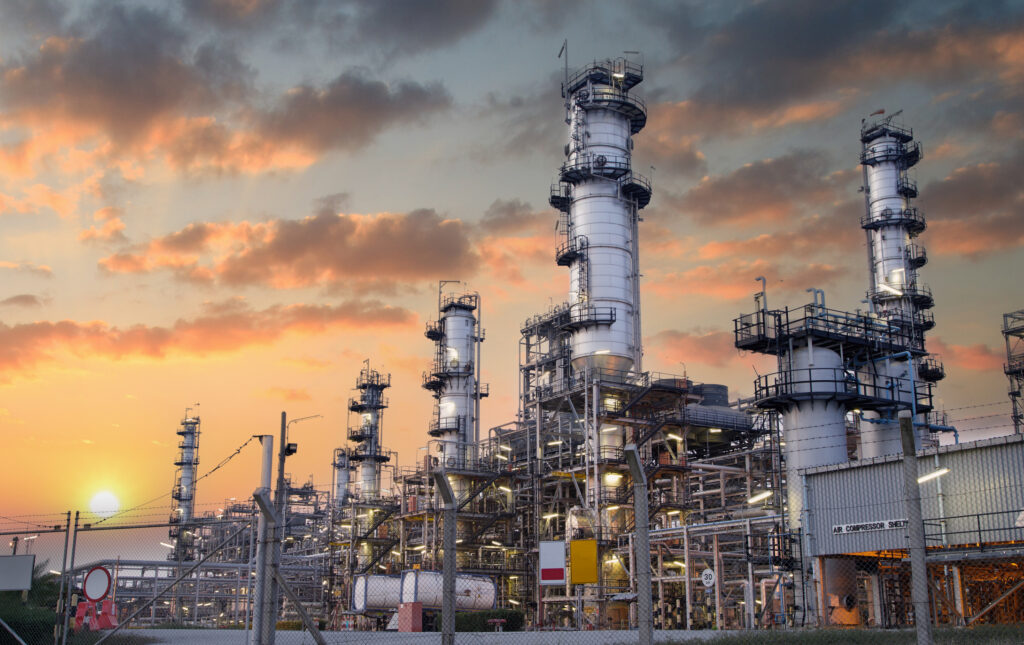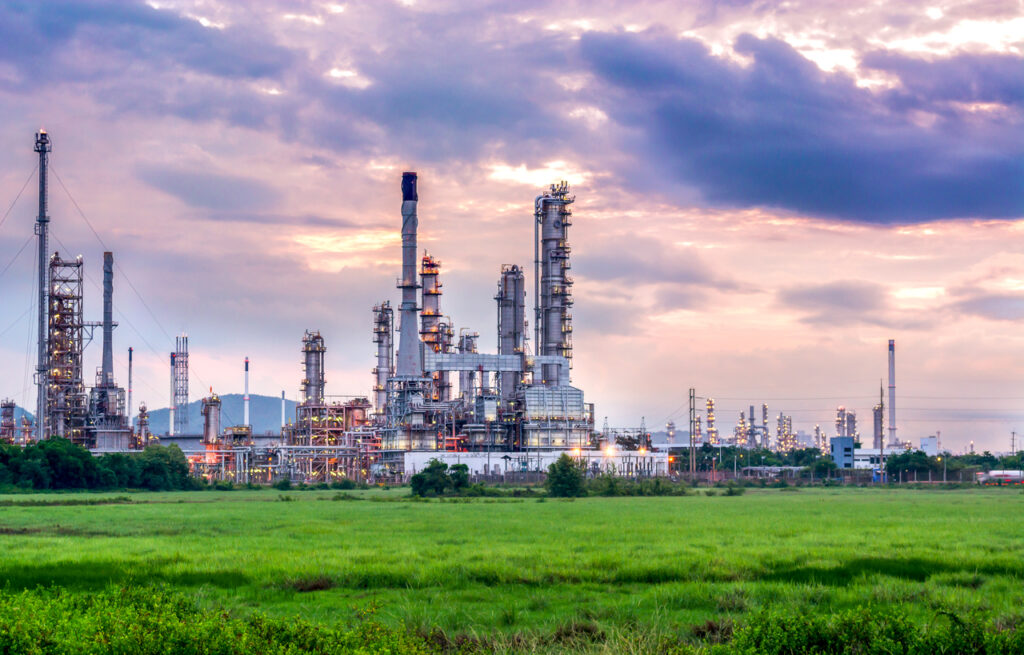Chemical catalysts make chemical reactions happen and play a vital role in numerous industries, facilitating essential chemical reactions and driving innovation. Understanding the potential of these catalysts is crucial for enhancing reaction rates, improving selectivity, and optimizing process efficiency.
In this introductory guide, we will delve into the world of chemical catalysts, exploring their characteristics, factors influencing performance, development and optimization, diverse applications, and the challenges and future directions of catalyst research.
What Are Chemical Catalysts?

Chemical catalysts are special materials inside of chemical reactors. Often chemical catalysts are special metals such as palladium, platinum, gold, nickel, and alumina thinly spread over support media.
The purpose of a chemical catalyst is to increase the rate of a chemical reaction without being consumed in the process. They enable reactions to occur at lower temperatures and with lower energy requirements, making them indispensable in industrial processes that produce basic materials used in every part of modern-day living.
Catalysts can be categorized into two main types: homogeneous and heterogeneous catalysts.
Homogeneous catalysts are present in the same phase as the reactants, while heterogeneous catalysts exist in a different phase, typically a solid instead of a gas or liquid.
Industry Applications for Chemical Catalysts

Chemical catalysts find extensive use in various industries, including:
Petrochemicals
Catalysts are essential for processes like cracking (splitting molecules apart), reforming (rearranging molecules), and polymerization (connecting molecules), enabling the production of fuels, plastics, and other petrochemical products.
Pharmaceutical and Fine Chemicals
Catalysts are employed in pharmaceutical synthesis, chiral molecule production (aka left-hand vs. right-hand similarities), and fine chemicals manufacturing (very small volumes), enabling efficient and selective reactions (e.g.: mitigating unwanted side reactions).
Environmental Applications
Catalysts play a crucial role in environmental remediation (getting rid of existing pollutants), including emission control in stack gas, wastewater treatment, and avoiding air purification.
Energy and Fuel Production
Catalysts are utilized in renewable energy production, hydrogen fuel cells, and biomass conversion processes (plant materials into useful materials), contributing to sustainable energy solutions (e.g. green hydrogen, renewable natural gas, and photovoltaics).
Polymer and Materials Synthesis
Catalysts drive polymerization reactions, facilitating the production of plastics, resins, and advanced materials with specific properties.
Other Emerging Applications
Catalysts are being explored for applications in biocatalysis (e.g. waste bread into biodegradable plastics & animal fat substitutes), carbon capture and utilization, and emerging fields such as artificial photosynthesis.

Factors Influencing Catalyst Performance
Catalyst Composition and Structure
The performance of a catalyst is influenced by its composition (types of active metals), structure (shape, size, and support materials), and number of active sites. The availability of active sites and the surface area of the catalyst significantly impact its efficiency. Catalyst support materials also play a crucial role in stabilizing and enhancing catalyst activity.
Reaction Conditions and Operating Parameters
Factors such as temperature, pressure, reactant concentration, velocity & flow path of reactants and heat transfer can affect catalyst performance. Optimal reaction conditions must be determined to maximize catalyst efficiency (reaction completion) and selectivity (production of desired products vs. co-products).
Catalyst Characterization Techniques
Various spectroscopy, microscopy, and surface area analysis techniques allow for the characterization of catalysts. Understanding the catalyst’s structure and surface properties aids in developing strategies for improvement. Small details such as a solid material’s crystal structure and how different materials bond to each other can have significant impacts on the overall catalyst performance.
Catalyst Development and Optimization

Catalyst Synthesis Methods
Traditional methods like impregnation and precipitation are commonly employed for catalyst synthesis. However, modern approaches such as nanocatalysts and immobilization techniques offer enhanced performance and control.
Catalyst Testing and Evaluation
High-throughput screening techniques enable the rapid evaluation of catalyst performance. Metrics such as conversion, selectivity, and yield are used to assess catalyst efficiency and suitability for specific reactions. Longevity and stability assessments are vital for practical applications.
Strategies for Catalyst Optimization
Catalyst optimization involves studying structure-activity relationships, incorporating promoters or modifiers, and designing catalyst recovery and recycling processes. These strategies contribute to improving catalyst performance and cost-effectiveness.
Challenges & The Future of Chemical Catalysts

The field of catalyst research faces several significant challenges and presents exciting opportunities for future advancements. As scientists and engineers strive to unlock the full potential of chemical catalysts, they encounter complex problems that require innovative solutions and interdisciplinary approaches.
Catalyst Design for Complex Reactions
One of the primary challenges in catalyst research is developing efficient catalysts for complex reactions. Many chemical transformations involve intricate reaction mechanisms with multiple intermediates and products.
Designing catalysts that can selectively promote specific pathways and control reaction kinetics in such systems requires a deep understanding of reaction mechanisms and catalyst properties. Researchers employ advanced techniques such as computational modeling, spectroscopy, and kinetic analysis to elucidate the intricacies of these reactions and guide catalyst design.
Environmental and Sustainability Considerations
In today’s world, sustainability and environmental impact are paramount concerns. Catalyst research is shifting towards developing environmentally friendly and sustainable solutions. Scientists are exploring catalysts that minimize or eliminate the use of toxic or rare materials, reduce energy consumption, and decrease greenhouse gas emissions.
Developing catalysts for renewable energy production, carbon capture and utilization, and green chemistry applications is crucial for achieving a more sustainable future.
Integration of Catalysts with Other Technologies
The integration of catalysts with other technologies opens up new avenues for innovation. Researchers are exploring the synergistic effects of combining catalysts with biocatalysis, enzymes, or other emerging technologies such as metallocenes.
This integration allows for the development of hybrid catalyst systems that can harness the strengths of multiple catalytic processes, enabling more efficient and selective transformations. The field of cascade reactions, where multiple reactions occur consecutively in a single reactor, is an exciting area of research that exemplifies the integration of different catalytic systems.
Advancements in Catalyst Characterization and Computational Modeling
Characterizing catalysts at the atomic and molecular levels is essential for understanding their structure-activity relationships and designing optimized catalysts. Advanced techniques such as in situ spectroscopy, microscopy, and surface science methods provide insights into the active sites, surface morphology, and reaction mechanisms of catalysts.
Additionally, computational modeling and simulations play a vital role in predicting catalytic behavior, elucidating reaction mechanisms, and screening potential catalyst candidates. The advancement of these characterization and modeling tools contributes to more efficient catalyst development and optimization.
Future Prospects and Emerging Trends
The future of catalyst research holds exciting prospects and emerging trends that are poised to shape the field. Some of these include:
- Catalysts for Artificial Intelligence Applications: Catalysts play a vital role in chemical processes related to artificial intelligence, such as computational chemistry, machine learning, and data analysis. Developing catalysts tailored for these applications can enhance computational efficiency, accelerate data processing, and enable new AI-driven discoveries.
- Sustainable Chemistry: The integration of catalysts in sustainable chemistry practices, such as green synthesis, renewable feedstock utilization, and waste valorization, is gaining momentum. Catalysts that enable greener and more sustainable chemical processes will play a pivotal role in reducing the environmental footprint of the chemical industry.
- Advanced Catalytic Materials: Exploring novel catalytic materials, such as metal-organic frameworks (MOFs), nanoparticles, and single-atom catalysts, offers exciting opportunities. These materials provide unique structural and chemical properties that can enhance catalytic performance, selectivity, and stability.
- Catalysts for Energy Storage and Conversion: As the demand for clean and efficient energy storage and conversion technologies grows, catalysts play a crucial role in processes like electrocatalysis, photocatalysis, and fuel cell technologies. Developing catalysts that enable efficient energy conversion and storage will be essential for transitioning to sustainable energy systems.
Applied Catalysts: Your Dependable Partner For Chemical Catalyst Needs
Applied Catalysts stands out as a valuable resource for businesses seeking high-quality catalyst solutions. With extensive expertise and experience, Applied Catalysts offers a range of services to assist businesses in meeting their chemical catalyst needs.
From catalyst development and optimization to customized catalyst synthesis, our team of experts can provide tailored solutions to enhance reaction rates, selectivity, and process efficiency.
By partnering with Applied Catalysts, businesses can access cutting-edge technologies, innovative catalyst design, and reliable support, empowering them to unlock the full potential of chemical catalysts and confidently drive their operations.
Explore our comprehensive range of catalyst solutions and services and contact our team to discuss your project needs.
Recent Posts
Understanding Catalyst Deactivation: How Characterization Can Identify the Root Cause
AbstractCatalyst deactivation is a common challenge in many catalytic processes, but by identifying the root causes, taking appropriate corrective actions, and utilizing advanced characterization techniques, it is possible to maintain…
Read MoreChallenges in Catalyst Regeneration and How to Overcome Them
Learn the techniques for effective catalyst regeneration and how it can optimize your operations. Read now to enhance your industrial processes!
Read MoreRegenerative Thermal Oxidizer (RTO) to RCO Conversion
Regenerative thermal oxidizers (RTOs) are a leading solution for controlling volatile organic compounds (VOCs) and hazardous air pollutants (HAPs) from industrial air pollution sources. These systems can achieve up to…
Read More


